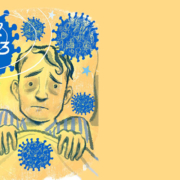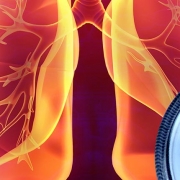Mechanism Revealed Behind Loss of Smell with COVID-19
Researchers have discovered a mechanism that may explain why people with COVID-19 lose their sense of smell.
Published online February 1 in the journal Cell, the new study finds that infection with the pandemic virus, SARS-CoV-2, indirectly dials down the action of olfactory receptors, proteins on the surfaces of nerve cells in the nose that detect the molecules associated with odors.
xperiments showed that the presence of the virus near nerve cells (neurons) in olfactory tissue brought an inrushing of immune cells, microglia, and T cells that sense and counter infection. Such cells release proteins called cytokines that changed the genetic activity of olfactory nerve cells, even though the virus cannot infect them, say the study authors. Where immune cell activity would dissipate quickly in other scenarios, in the brain, according to the team’s theory, immune signaling persists in a way that reduces the activity of genes needed for the building of olfactory receptors.
One unique symptom of COVID-19 infection is loss of smell without the stuffy nose seen with other infections like the common cold, researchers say. In most cases, the smell loss lasts only a few weeks, but for more than 12 percent of people with COVID-19, olfactory dysfunction persists in the form of ongoing reduction in the ability to smell (hyposmia) or changes in how a person perceives the same smell (parosmia).
To gain insight into COVID-19–induced smell loss, the current authors explored the molecular consequences of SARS-CoV-2 infection in golden hamsters and in olfactory tissue taken from 23 human autopsies. Hamsters represent a good model, being mammals that both depend more on the sense of smell than humans, and that are more susceptible to nasal cavity infection.
Release date: 02 February 2022
Source: NYU Grossman School of Medicine









